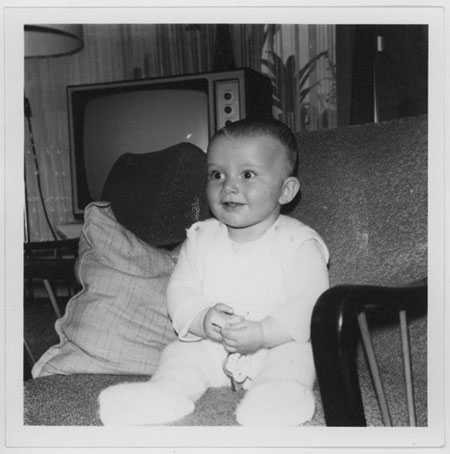Who is remembering?

Just like most people, I have photographs from my childhood, and I occasionally look through them. Of course, I don’t remember everything about each individual image - in the earliest cases, I don’t remember anything - but for most photographs I do at least remember something. I know what the images mean, I know about the situations. With memory being very fickle and complicated we could of course argue about what these memories mean and whether they accurately reflect what really happened. But that aside, there’s something about these photographs that helps define me in some way - and part of it has to do with the fact that the number of childhood photographs in my possession is limited. (more)
I can look through my childhood photographs in a relatively short period of time, and they were taken at sparse enough intervals for me to be able to see differences and to infer when they were taken (some have dates on their backs so no guessing is needed).
I’ve often wondered what it would be like to have many more such photographs. These days, parents seem to take thousands of photographs of their children - digital technologies make it easy to take and store them. How would I deal with a hard drive filled with thousands of photographs, instead of a book with less than one hundred? How would I even look through these photographs? What would these thousands of photographs mean to me?
Would it be possible to actually diminish the value of childhood photographs by taking too many? All those children who at some stage will have thousands of photographs (which, just as an aside, might exist on outdated computer storage devices) - will they ever look through them? Will they be able to relate to them? How do you relate to thousands of photos of yourself? Even just looking at each and every photo will take a long time - unless you flick through them quickly.
I was thinking about that when I came across this review this morning. One problem mentioned in there:
“A 2008 study conducted by researchers at the University of Sheffield in Britain found that 39 percent of surveyed participants failed to retrieve digital photos of important events that took place only a year before; they couldn’t find them on their hard drives and had no idea how to search for them, as they had not organized and annotated them properly.”
That’s, of course, simply a problem of organization. It gets way trickier once you move beyond that, as the review makes clear. I’m not sure whether we can say at this early stage what the real repercussions of having more and more “data” about ourselves on our computer hard drives will be. There are lots of different aspects that need to be taken into consideration. Depending on your personal ideas, you will probably find yourself supporting one or the other position outlined in the review.
What seems certain, however, is that things will be different for future generations; and what we call vernacular photography might play a pretty big part of that. We can certainly speculate what will or might change, and childhood photographs offer an interesting starting point.
Needless to say, the safest thing for me to do is to wait ten to fifteen years and to then ask my nieces how they deal with all the photographs of themselves that they will probably have on some computer somewhere. It will be very interesting to compare their experiences with all those photographs with my experiences with the few photographs I have.
Update (9 June 2010): Jake Dow-Smith (thank you!) sent me the link to this long piece by Sam Williams, which addresses some of the issues mentioned above (it’s a rather long read, and I haven’t read the full piece, yet).